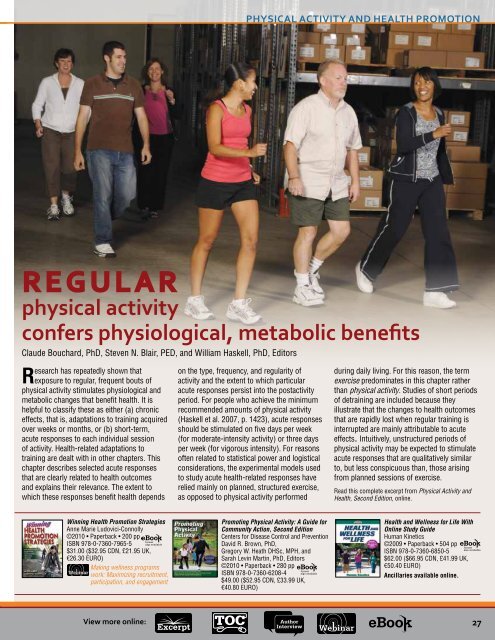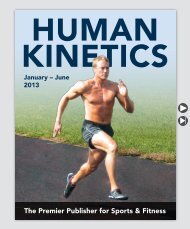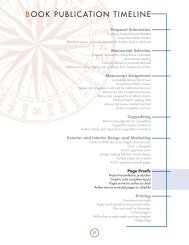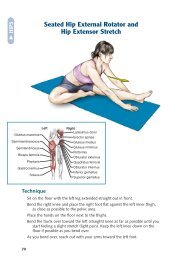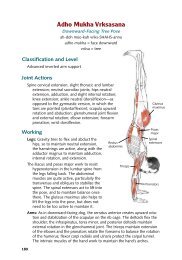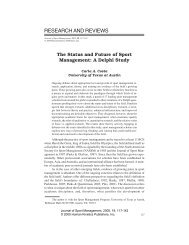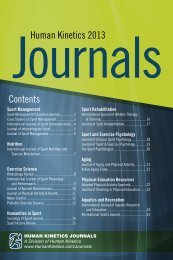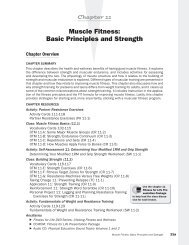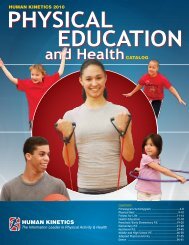PROTEIN PROTEIN - Human Kinetics
PROTEIN PROTEIN - Human Kinetics
PROTEIN PROTEIN - Human Kinetics
Create successful ePaper yourself
Turn your PDF publications into a flip-book with our unique Google optimized e-Paper software.
Physical Activity and health promotion<br />
Regular<br />
physical activity<br />
confers physiological, metabolic benefits<br />
Claude Bouchard, PhD, Steven N. Blair, PED, and William Haskell, PhD, Editors<br />
Research has repeatedly shown that<br />
exposure to regular, frequent bouts of<br />
physical activity stimulates physiological and<br />
metabolic changes that benefit health. It is<br />
helpful to classify these as either (a) chronic<br />
effects, that is, adaptations to training acquired<br />
over weeks or months, or (b) short-term,<br />
acute responses to each individual session<br />
of activity. Health-related adaptations to<br />
training are dealt with in other chapters. This<br />
chapter describes selected acute responses<br />
that are clearly related to health outcomes<br />
and explains their relevance. The extent to<br />
which these responses benefit health depends<br />
on the type, frequency, and regularity of<br />
activity and the extent to which particular<br />
acute responses persist into the postactivity<br />
period. For people who achieve the minimum<br />
recommended amounts of physical activity<br />
(Haskell et al. 2007, p. 1423), acute responses<br />
should be stimulated on five days per week<br />
(for moderate-intensity activity) or three days<br />
per week (for vigorous intensity). For reasons<br />
often related to statistical power and logistical<br />
considerations, the experimental models used<br />
to study acute health-related responses have<br />
relied mainly on planned, structured exercise,<br />
as opposed to physical activity performed<br />
during daily living. For this reason, the term<br />
exercise predominates in this chapter rather<br />
than physical activity. Studies of short periods<br />
of detraining are included because they<br />
illustrate that the changes to health outcomes<br />
that are rapidly lost when regular training is<br />
interrupted are mainly attributable to acute<br />
effects. Intuitively, unstructured periods of<br />
physical activity may be expected to stimulate<br />
acute responses that are qualitatively similar<br />
to, but less conspicuous than, those arising<br />
from planned sessions of exercise.<br />
Read this complete excerpt from Physical Activity and<br />
Health, Second Edition, online.<br />
Winning Health Promotion Strategies<br />
Anne Marie Ludovici-Connolly<br />
©2010 • Paperback • 200 pp<br />
ISBN 978-0-7360-7965-5<br />
$31.00 ($32.95 CDN, £21.95 UK,<br />
€26.30 EURO)<br />
Making wellness programs<br />
work: Maximizing recruitment,<br />
participation, and engagement<br />
Promoting Physical Activity: A Guide for<br />
Community Action, Second Edition<br />
Centers for Disease Control and Prevention<br />
David R. Brown, PhD,<br />
Gregory W. Heath DHSc, MPH, and<br />
Sarah Levin Martin, PhD, Editors<br />
©2010 • Paperback • 280 pp<br />
ISBN 978-0-7360-6208-4<br />
$49.00 ($52.95 CDN, £33.99 UK,<br />
€40.80 EURO)<br />
Health and Wellness for Life With<br />
Online Study Guide<br />
<strong>Human</strong> <strong>Kinetics</strong><br />
©2009 • Paperback • 504 pp<br />
ISBN 978-0-7360-6850-5<br />
$62.00 ($66.95 CDN, £41.99 UK,<br />
€50.40 EURO)<br />
Ancillaries available online.<br />
View more online: 27


